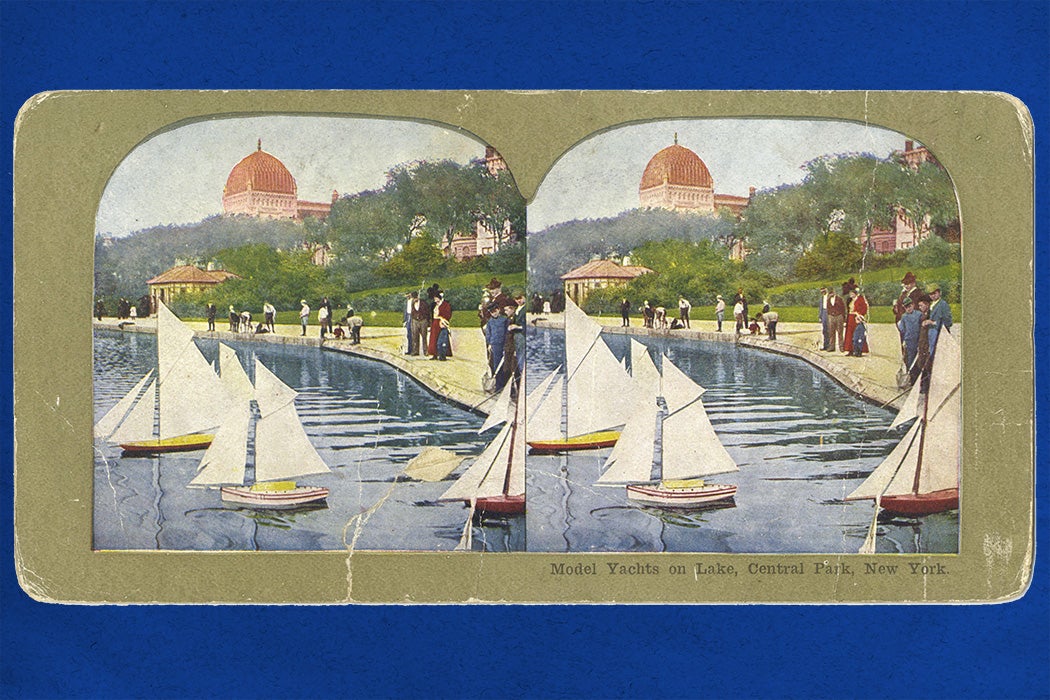In the nineteenth century, if you wanted to immerse yourself in another world, chances are you would find the nearest stereoscope. Popular in homes, dime museums, and schools throughout the 1800s, stereoscopes presented people of all stripes and classes with a new way of seeing themselves and the world around them.
Stereoscopes, at their simplest, use a mirror and reflection within a small goggle-type box to create a three-dimensional image out of two-dimensional photographs. A card—known as a stereogram or stereograph—with a pair of pictures showing two slightly different perspectives of a subject, scene, or artwork is placed in front of the stereoscope’s binocular openings, such that the viewer looks into the lens and sees a tiny chamber of surprising depth and fullness. Each eye sees a different picture, but the brain stitches them together to create a single image with an illusory depth of field. Like the TARDIS, stereoscopes offered the gift of something bigger on the inside.
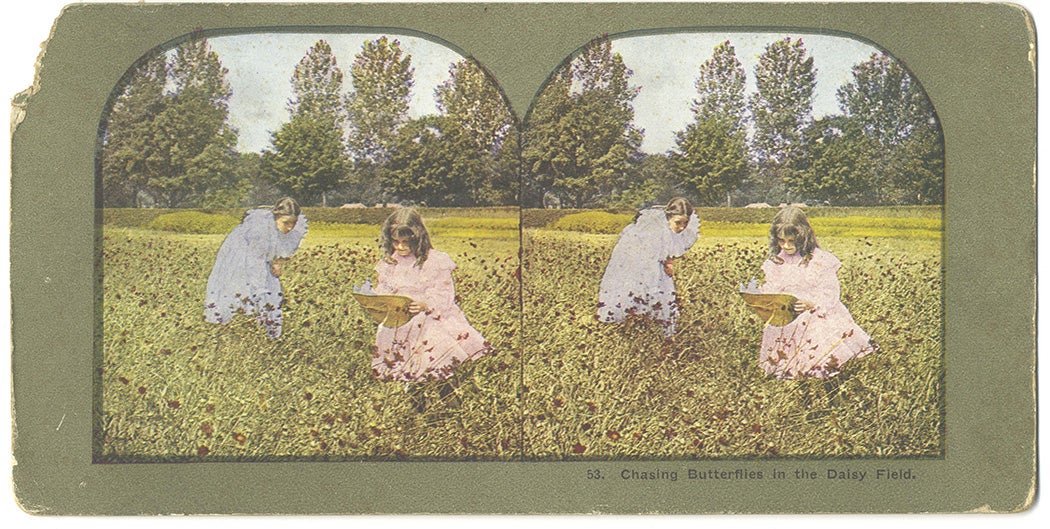
The English inventor and King’s College professor Charles Wheatstone first described the concept in 1838 in a paper read before the Royal Society of London. Wheatstone hit on the idea of manipulating human binocular vision with mirrors, considering it so simple he was surprised no artist or philosopher had yet considered the idea, given the laws of perspective.
“[T]he same object in relief is, when viewed by a different eye, seen from two points of sight at a distance from each other equal to the line joining the two eyes,” he reminded his listeners.
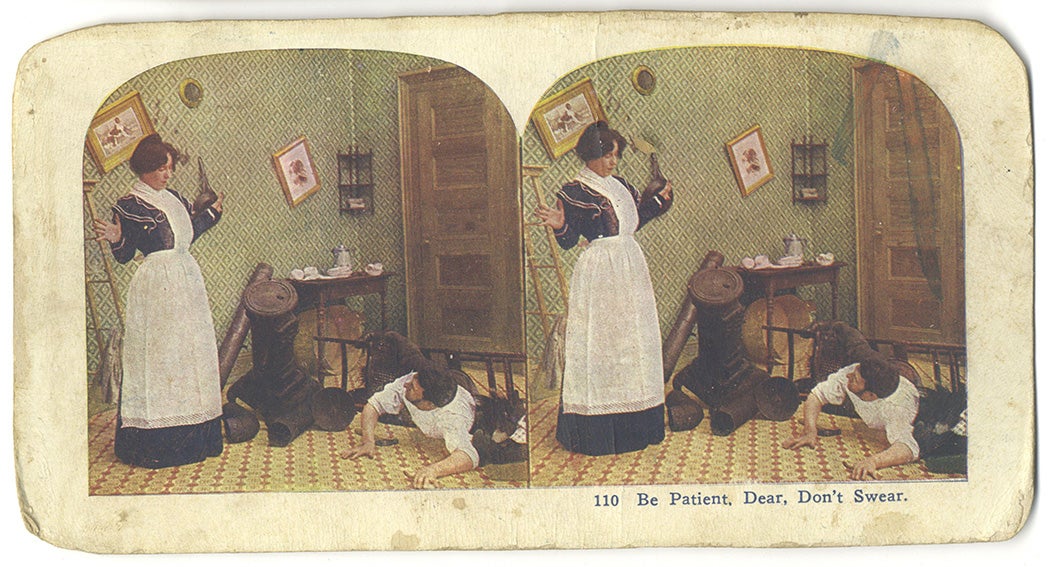
Wheatstone engaged an optician to produce a stereoscope according to his idea, and this certainly proved the concept. But stereography really took off thanks to the advancement of a different nineteenth-century technological marvel: photography. Though photographic techniques had been in evidence since the early 1800s, by mid-century images had become cheap and reproducible, and therefore extremely popular.
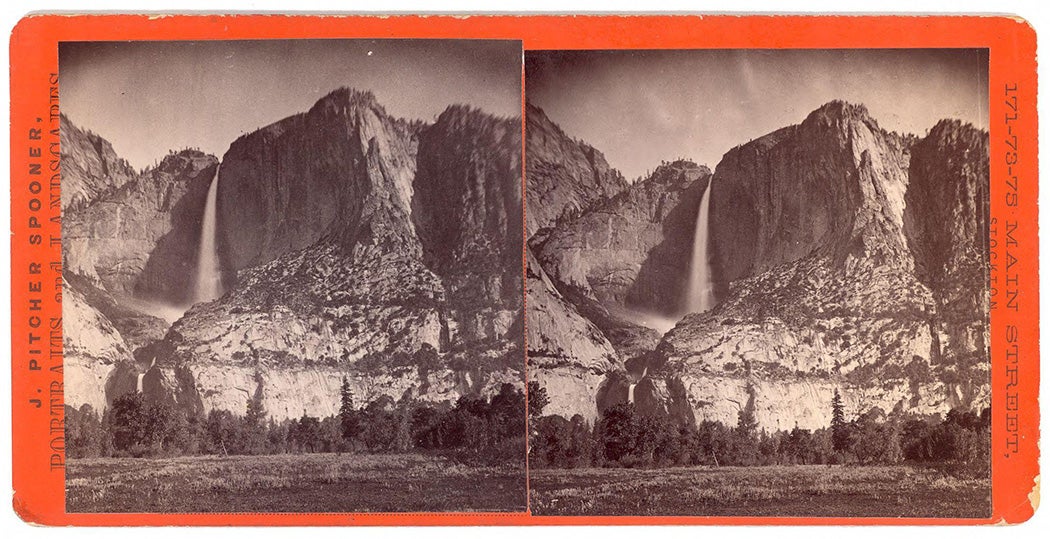
“Slow art” advocate Arden Reed notes that after the 1854 invention of the pocket-sized carte de visite, “an astonishing number of them—between three and four hundred million—sold yearly in England alone. Within a generation of photography’s arrival, nearly everyone, regardless of wealth, sat for a portrait.” A three-dimensional drawing is a neat trick. A three-dimensional photographic image, bringing a frozen moment of reality to life in your very own eyeballs, is something else entirely.
Stereographs quickly incorporated photography, and this tantalizing realism was the key to their popularity. Inventors, scientists, and makers built on the idea of Wheatstone’s original patented design and came up with new models. At the Great Exhibition held at London’s Crystal Palace in 1851, the Scottish scientist David Brewster displayed his lenticular version of the stereoscope, which was notably smaller and lighter than Wheatstone’s and looked not unlike a steampunk ViewMaster. Queen Victoria was enthralled by the device, and her approval led to massive sales, writes Reed, a quarter million images selling in the United Kingdom and France within a matter of months.
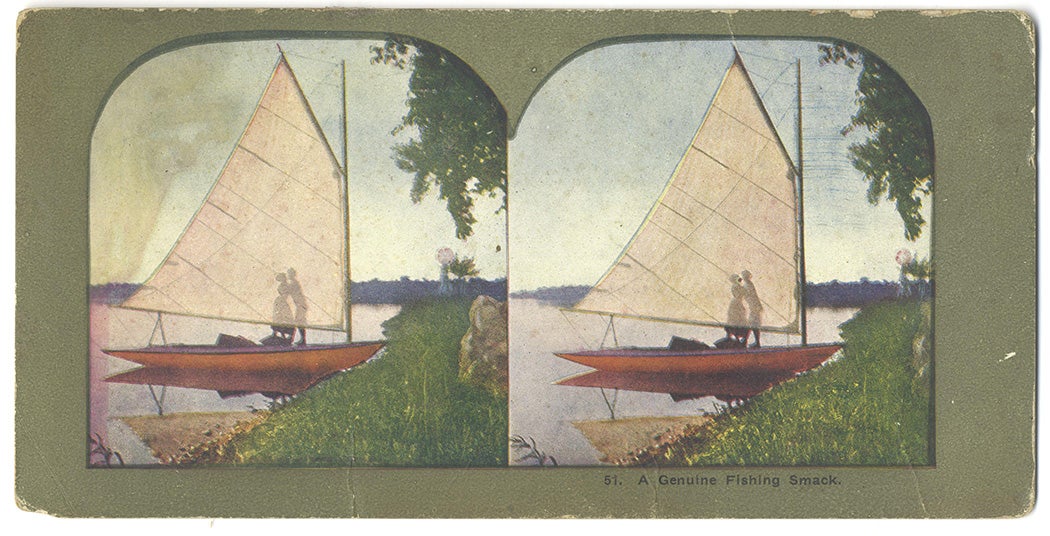
In Victorian-era homes in the UK and the United States, stereographs were as common as televisions are in the modern age. These photo cards and their viewers combined to satisfy a wide range of appetites. As the stereographs held in collections at Wofford College and University of the Pacific, share via JSTOR, almost any subject was fair game for a stereogram. For the housebound, there were mountains, lakes, and city streets. For the inquiring, they were a means to talk about science, vision, veracity, and even philosophy.
According to science historian Robert J. Silverman, stereography was
immediately recognized as the consummate Victorian amusement. The stereoscope belonged to the class of “philosophical toys,” such as the kaleidoscope and the zoetrope, which provided entertainment but also illustrated scientific principles.
In 1869, Harper’s Magazine explored modes of seeing in an article entitled “The Eye and the Camera.” Although multiple modes of imaging and processing—daguerreotypes, calotypes, glass plates, the wet collodion process—were established by then, photograph was still sometimes seen as a suspect technology. There was skepticism about some photographic images, but also excitement at their fidelity. Whether you were looking at matters of natural theology or a really cool photo of the pyramids at Giza through those binocular lenses, stereography had hypnotic appeal. Those little boxed-in blinders blocked out the larger world, immersing the viewer in their own visual field and controlling the experience. As Reed argues, the image brings the viewer “more deeply to the experience than were he or she looking at flat reproductions. With a photograph the eye moves across the picture plane. With stereographs, the eye does that but it also moves, as it were, forward and back, in and out.”
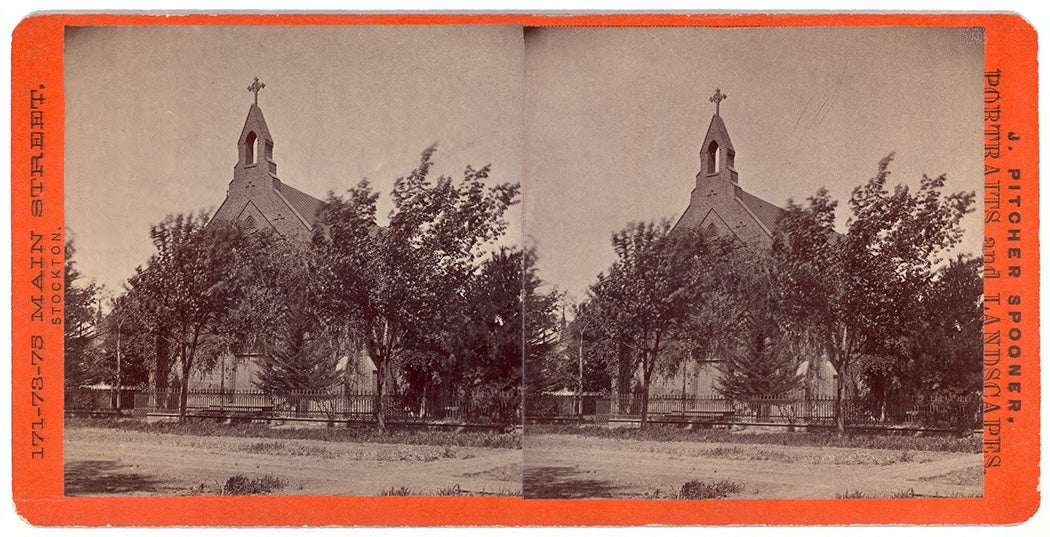
And let us not forget: history shows that if there’s any new technology, the adult entertainment industry frequently acts as a driver and early adopter. Stereography was no exception. Not everyone was looking for images of chaste romance, or the Alps, after all. Or churches. And the stereoscope was a closed experience, opaque to the outside eye but showing the viewer a decidedly spicier reality. As scholar Colette Colligan demonstrates, as the trade ballooned, with a “stereoscope in every home,” so too did a parallel trade in explicit cards (article contains sexual imagery). With depth and realism, they had an understandable appeal: situations that became “dimensional and perceptual, rather than mimetic and symbolic,” Colligan writes.
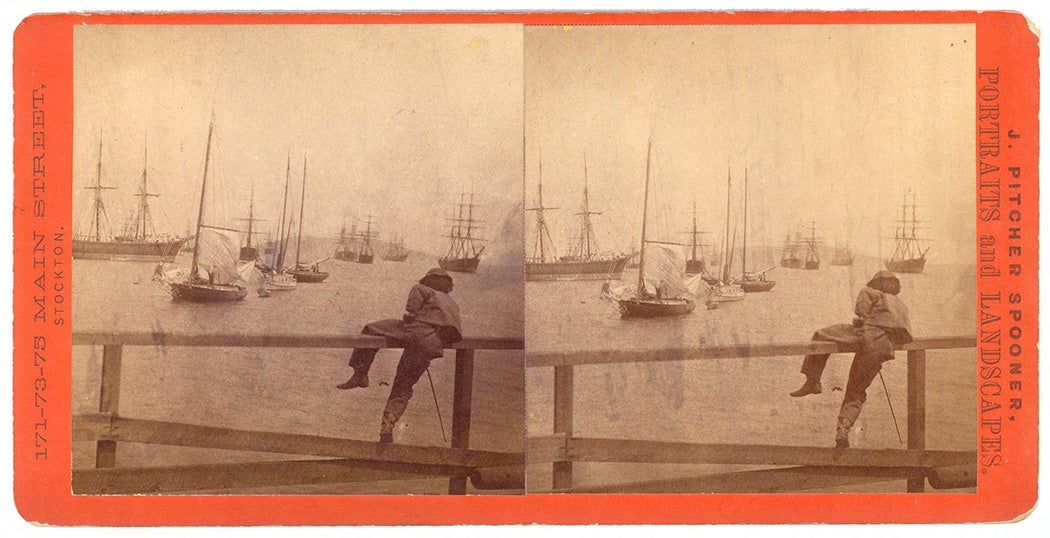
For other viewers, stereographs were a vicarious way to travel to far-flung places. Not everyone could afford to see the great cities or natural wonders of the world. A stereogram supplied “travel not for the body, but for the mind,” writes Rick VanderKnyff, quoting an early 1900s catalogue of stereographic views. The visual medium encouraged imagination, immersion, and a projection of oneself into the image.
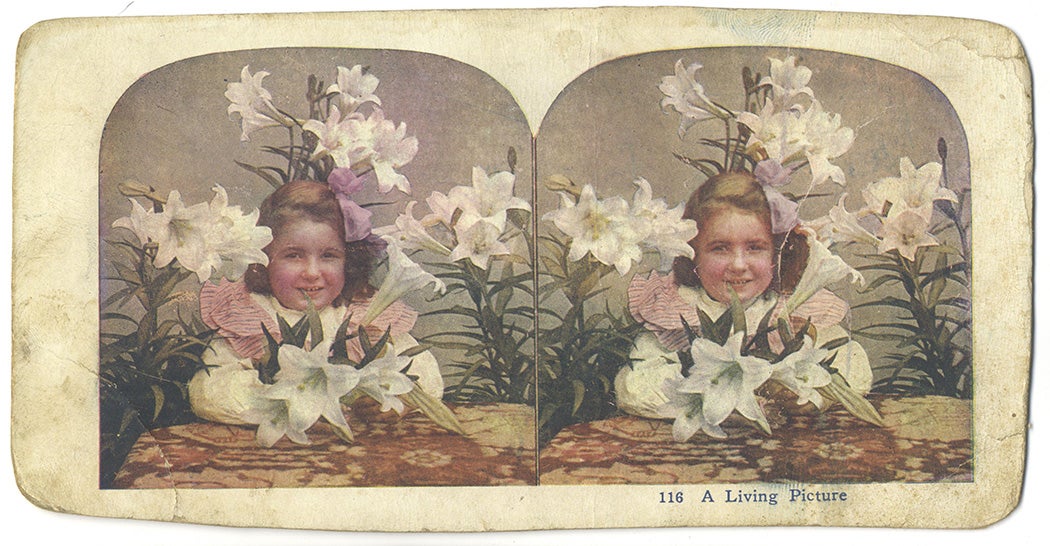
VanderKnyff points out that “[b]efore the advent of the halftone allowed books and magazines to employ photographic illustrations on a wide scale, stereographs of Grand Tour destinations and other sites of historic or natural note were printed and sold by the thousands.”
Weekly Newsletter
P. T. Barnum’s American Museum featured an entire gallery of lenses showing painted “cosmorama” scenes of foreign cities. (Barnum posed for stereographic photos, too, perhaps to remember his Yosemite vacation in as vivid detail as possible.) Colonialist exploration made the non-Western world fodder for the stereograph market, too, sending implicitly supremacist, racialized images back to paying viewers. An advertisement for Underwood and Underwood stereographs claimed that images from African travel were “especially valuable because it shows primitive conditions in Africa in their first contact with modern,” writes VanderKnyff.
Stereographs ultimately gave way to more modern imaging technology. In many ways, the concept acted as a bridge between static pictures and modern cinematic imaging. It popularized an idea of individualized, immersive entertainment that we’re still exploring in modern media. You can explore more stereographic images in Wofford College’s Stereograph Collection and University of the Pacific’s Spooner California Stereograph Collection, shared via JSTOR. But if the stereoscope has a truly firm grip on your heart, go ahead: make your own.
